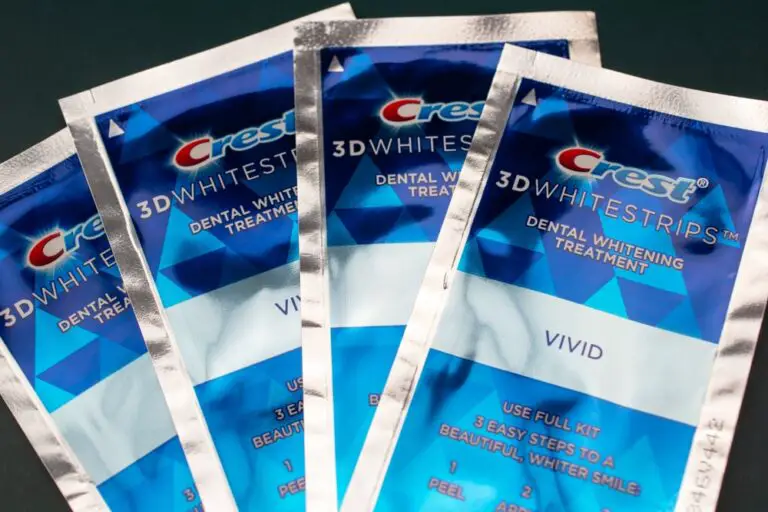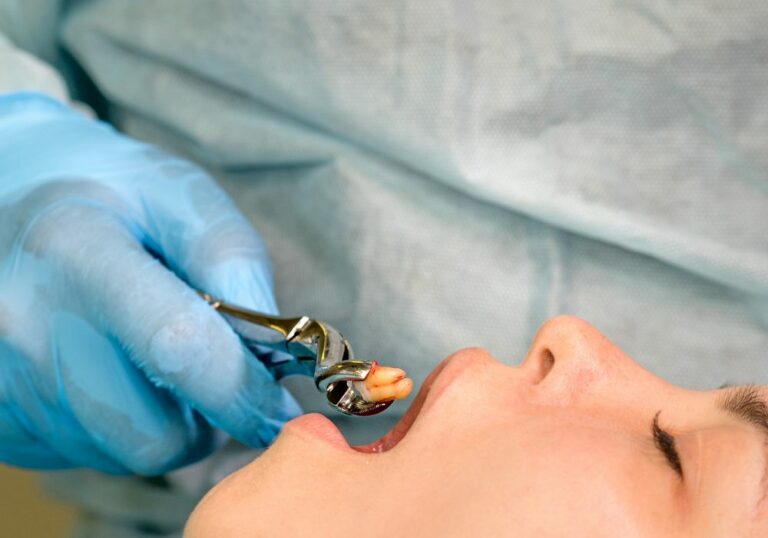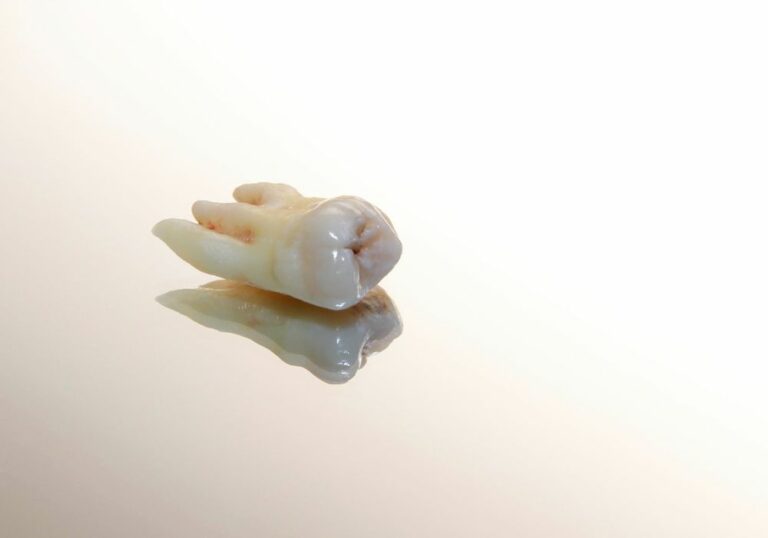Flossing is a critical part of caring for your teeth and gums. It removes harmful plaque bacteria from between teeth and below the gumline where brushing can’t reach. However, many people struggle to fully insert floss between all of their teeth. Tight contacts, misaligned teeth, and other issues can make it frustratingly difficult to get floss through.
When floss won’t go between certain teeth, don’t just give up. Understanding the causes and using special techniques can help you successfully floss those trouble spots. Getting into a consistent flossing habit leads to healthier teeth and gums over the long run.
Tooth anatomy and the importance of flossing
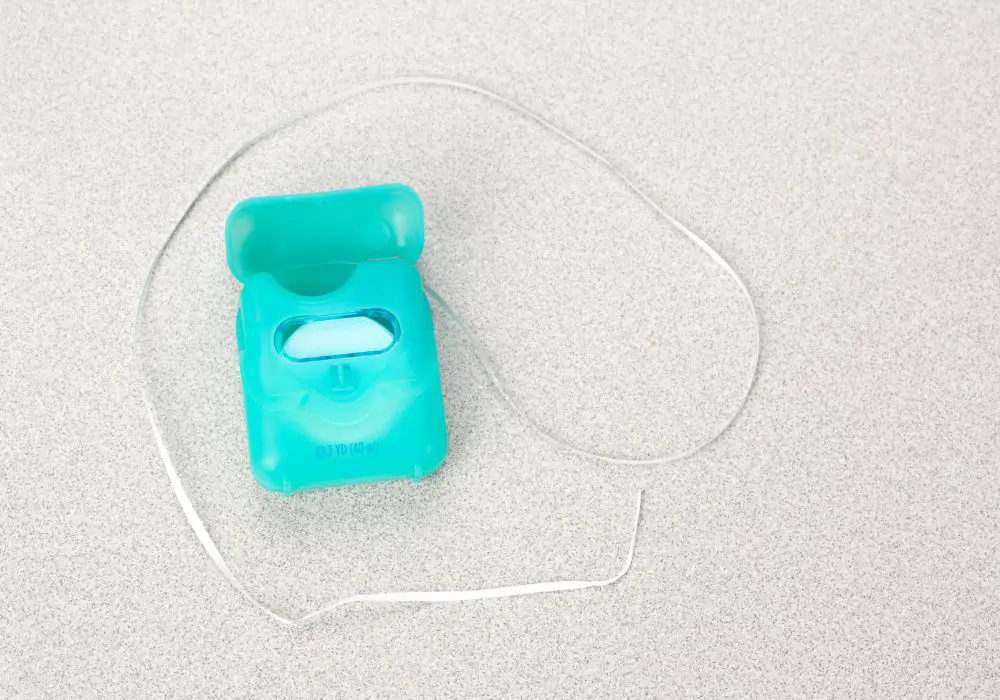
Your teeth are intricate structures composed of different minerals and tissues. The visible crown is coated with enamel, the hardest substance in the human body. Underneath lies softer dentin which makes up the bulk of each tooth. The roots anchor teeth into the jawbone and are covered with cementum.
The gumline surrounds teeth right where they meet the gums. This critical junction is called the gingival margin. The gingival sulcus, or space between teeth and gums, normally extends about 3 millimeters below the gumline. This shallow groove around each tooth harbors plaque bacteria.
Flossing serves a vital purpose – it cleans the surfaces of teeth below the gumline and between teeth which cannot be reached by brushing alone. Bristles only brush the outer facial and chewing surfaces. Floss is needed to scrape off leftover food, plaque, and tartar inside the tight spaces between teeth.
Neglected plaque between teeth hardens into tartar which can only be removed by professional cleaning. Plaque bacteria inflames the gums leading to gingivitis and eventual periodontitis. The destruction of underlying bone from severe gum disease causes permanent tooth loss. Thorough flossing disrupts plaque before it can calcify into hard tartar.
Challenging tooth anatomy
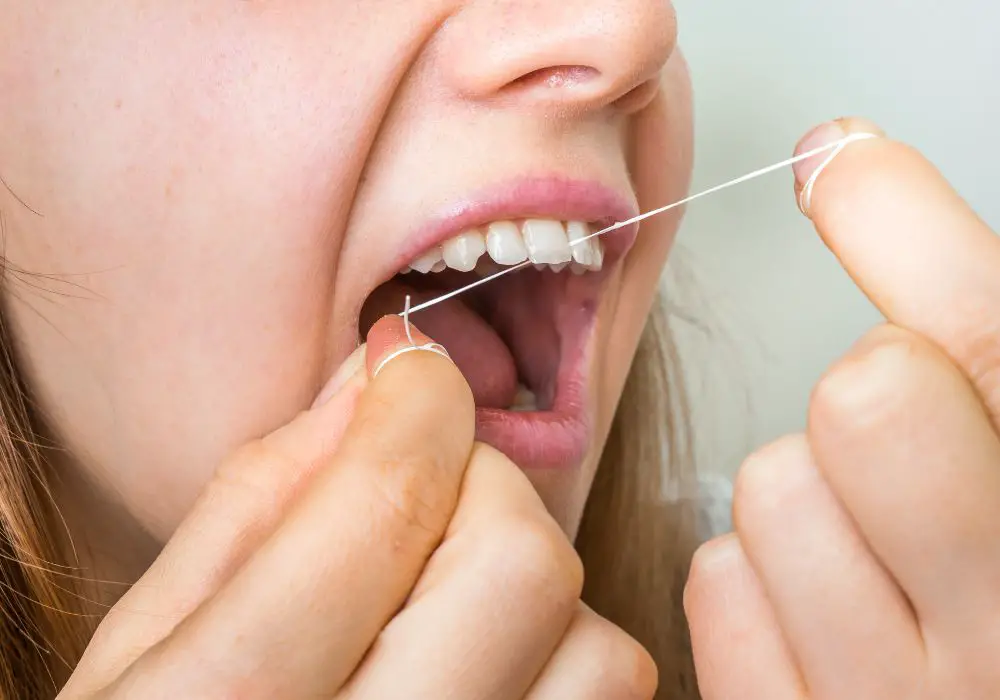
So why won’t floss go between certain teeth? Several anatomical factors make it hard to insert floss through tight contacts.
Contact points
Contact points are areas where adjacent teeth touch. The interproximal space in between should measure 1-2 millimeters wide. This gap allows just enough room for floss to slide through below the contact point.
However, the uneven surface of enamel can create irregular ridges, ledges, and pits. Micron-sized deviations in the contours of neighboring teeth cause them to fit poorly together. Extremely tight contacts provide an obstructed pathway that floss struggles to penetrate.
Overlapping teeth present an even bigger challenge. Sections of enamel may overlap each other, fully sealing off the interproximal space. There is nowhere to even insert the floss.
Gum health
Gingivitis, an early stage of gum disease, inflames the gums and causes swelling. Puffy, irritated gums can block floss from reaching down into the gingival sulcus. Severely receding gums also open up gaps between teeth for more food to get trapped.
Gum overgrowth between teeth presents a barrier too. A triangular wedge of excess gum tissue fills the space between teeth called the interdental papilla. Hypertrophied papilla overgrown from poor brushing and flossing habits can completely obstruct the interproximal space.
Bone loss
Alveolar bone surrounds and supports tooth roots. In periodontitis, chronic bacterial inflammation destroys the underlying bone. This causes gums to detach from the teeth and recede, exposing more of the tooth roots.
Unlike enamel, cementum root surfaces are rough and uneven. The added friction slows the progress of floss sliding against exposed root surfaces. Floss must take a more winding, convoluted path following the contours of receded gums.
Malocclusion
Malocclusion refers to poor positioning and alignment of teeth. Crowded, crooked teeth have contact points facing the wrong directions. Rotated and twisted teeth leave inadequate space for floss to pass through.
Crossbites, overbites, underbites, and other anomalous bites often have abnormal enamel contours. The irregular contact areas impede floss from fully reaching every crevice between malpositioned teeth.
Dental work
Crowns, bridges, implants, fillings, and other dental work alter the anatomy of teeth. The interface between natural tooth structure and artificial materials creates problematic areas for flossing. Poor crown contours, open margins, and misshapen contact points all hinder flossing.
Veneers, in particular, minimize the space between front teeth. Orthodontic retainers and permanent wires attached behind teeth also get in the way. Floss must take a winding path around dental work obstructing straightforward access between teeth.
Special flossing tools and techniques
Don’t let difficult tooth anatomy prevent you from flossing. Try these useful tools and techniques to overcome stubborn teeth that floss won’t go between:
Waxed floss – Floss with a smooth wax coating glides more easily between tight contacts. The wax lubricates floss to reduce friction.
Floss threaders – These are flexible plastic loop tools to thread floss through narrow spaces. They provide rigidity to push floss through tight contacts.
Interdental brushes – For very tight teeth, miniature interdental brushes clean better than floss. The wispy bristles can penetrate deep between teeth. Match brush size to your interproximal space.
Water flossing – Water flossers use pressurized water streams to flush out debris between teeth. Water flossing before regular flossing can dislodge plaque and open up tight contacts.
Floss under tension – Pulling floss taut makes it cut through tight contacts more easily. Apply gentle tension using your index fingers and thumbs as you floss.
Use a floss grip – Plastic floss grips with handles provide better leverage and control. The grip aids flossing back teeth and those hard to reach spots.
See your dentist – Extremely tight contacts may need minor reshaping by a dentist to open space between teeth. Orthodontic treatment can also better align crooked teeth that floss can’t penetrate.
Step-by-step flossing instructions
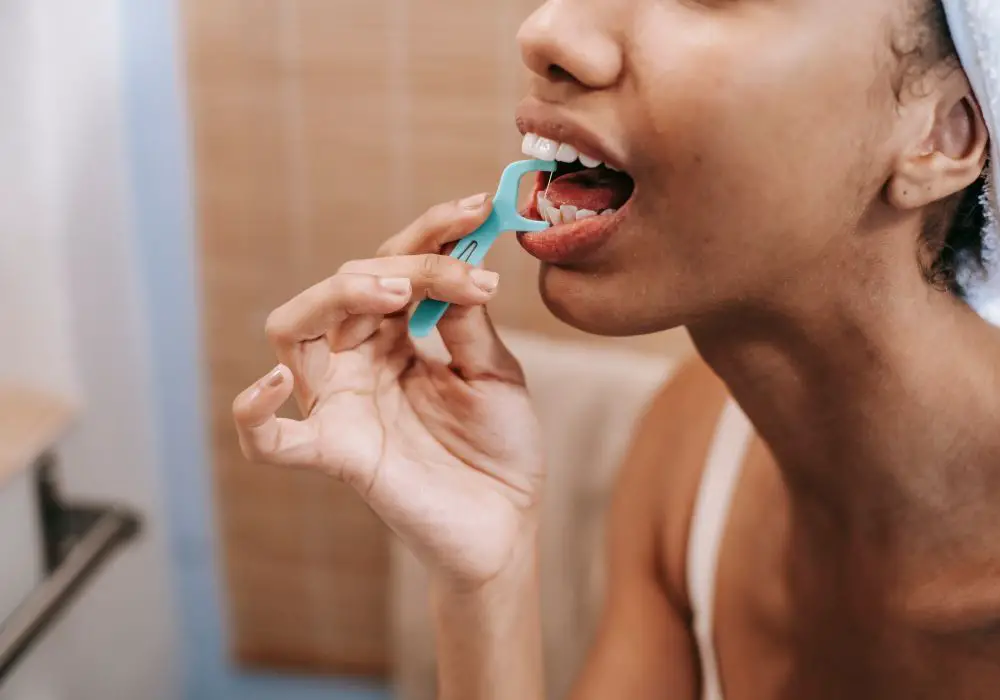
Follow proper technique to get the most plaque removal from flossing:
- Unwind about 18 inches of floss and wrap the ends around your middle fingers. Keep the floss taut.
- Using thumbs and index fingers, guide floss between two teeth with a gentle rubbing motion. Avoid snapping floss down.
- Curve the floss into a C-shape against the side of one tooth. The floss should hug the tooth, entering the gumline.
- Slide floss up and down, scrubbing the side of the tooth from gumline to crown. Repeat on adjacent tooth.
- Floss each tooth thoroughly, including behind the last molars. Use a clean section of floss as it collects plaque.
- To floss the front bottom teeth, rotate your wrist and floss at an upward angle.
- Rinse away scraps of plaque from floss before moving to the next tooth.
Floss carefully along the gumline using light pressure. The goal is to disrupt and remove plaque, not cut your gums. With practice, flossing won’t take more than 2-3 minutes once or twice daily.
Oral hygiene importance
Good oral hygiene prevents cavities, gum disease, bad breath, and tooth loss. It takes both brushing and flossing to fully remove bacteria from your mouth. Steps for optimal oral health include:
- Brush teeth thoroughly twice per day
- Floss once daily, preferably before bedtime
- Use antibacterial mouthwash to reduce bacteria
- Limit sugary foods/drinks that feed bacteria
- See your dentist twice yearly for exams and cleanings
Don’t neglect flossing certain teeth just because it feels difficult. Consistent flossing will reshape gum tissue and gradually open up space between tight teeth. Develop patience and use specialized tools to clean every tooth. Your perseverance will pay off with improved dental health.
Flossing FAQs
Here are answers to some common flossing questions:
How much floss should I use per tooth?
Use roughly 18 inches of clean floss per 1-3 teeth. Floss accumulates bacteria so change sections frequently.
What type of floss works best?
Waxed floss slides easiest between tight teeth. Soft tape floss conforms better around dental work. Choose a high quality floss that doesn’t shred.
How do I floss dental implants or bridgework?
Very carefully. Use floss threaders to get floss under bridgework. Floss gently around implants, avoiding knocking the posts. Interdental brushes also work.
Does flossing make gums bleed?
At first, yes. Inflamed gums bleed easily. But with regular gentle flossing, the gums will strengthen and stop bleeding. This takes a few weeks.
Can I floss too much?
Yes, excessive flossing multiple times per day causes gum recession. Aim to floss thoroughly once daily, providing time between sessions for gums to recover.
Why is flossing before bed so important?
Bacteria multiply fastest overnight after your last brushing. Flossing removes plaque before it can harden into tartar or cause harm overnight.

